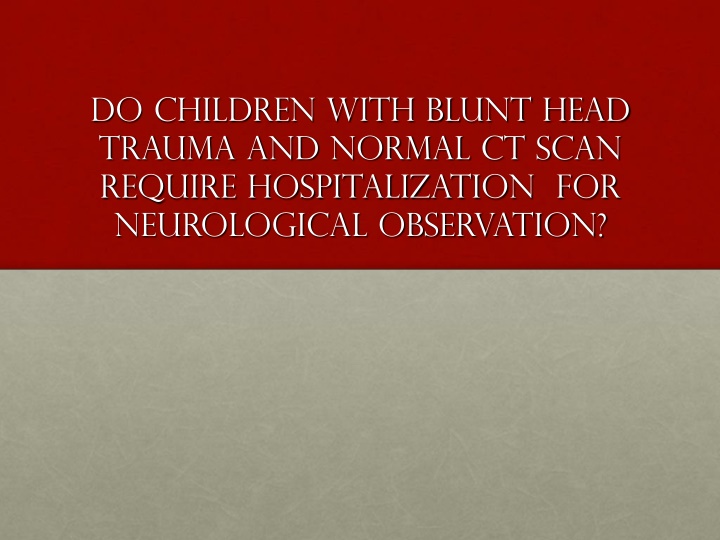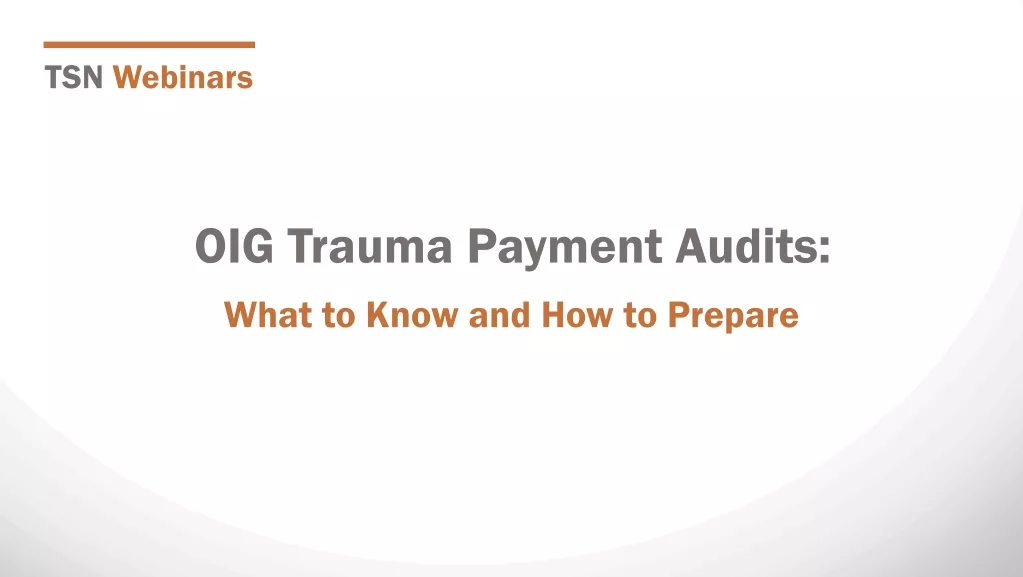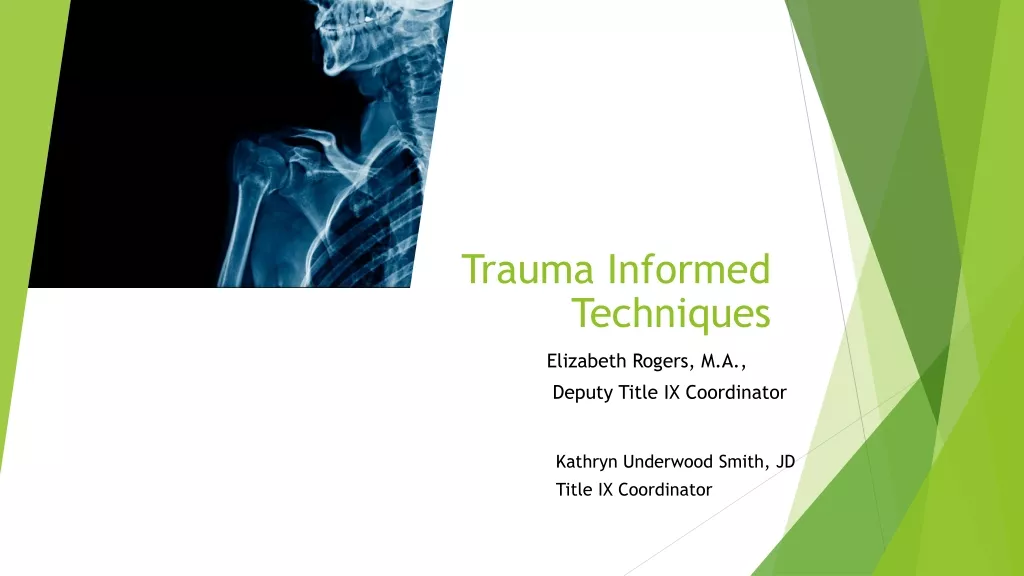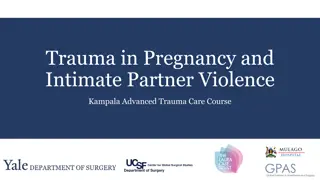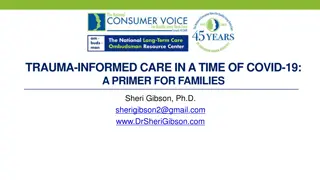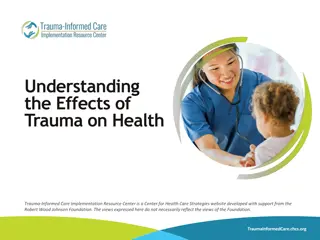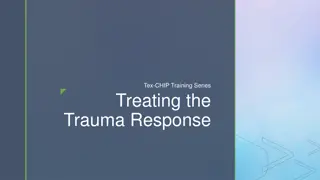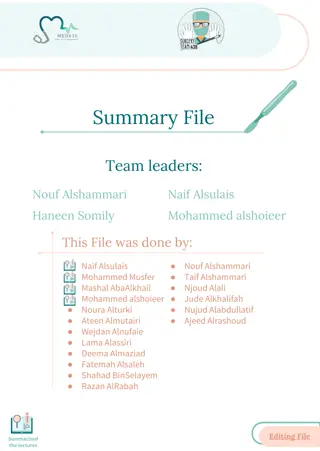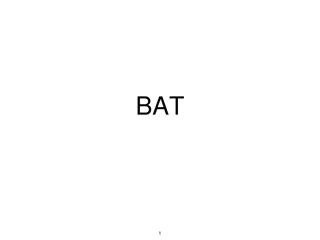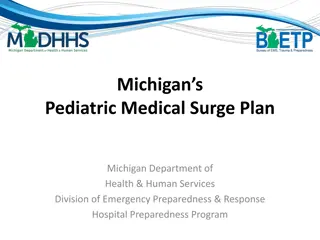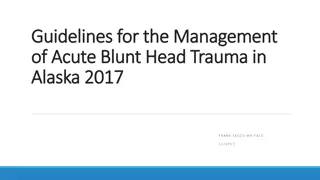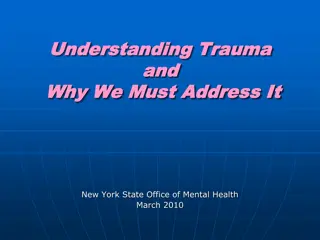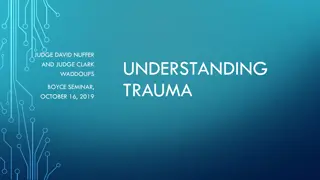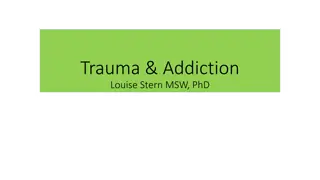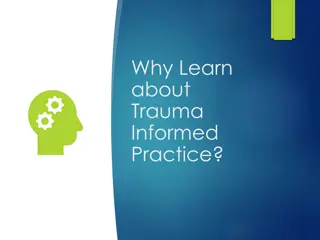Pediatric Blunt Head Trauma Management Study Findings
A study on children with blunt head trauma and normal CT scans investigated the need for hospitalization for neurological observation. The study design involved a prospective multicenter observational cohort with a primary randomization to hospital stay or discharge home. Sensitivity analysis and negative predictive value calculations were conducted, highlighting limitations such as selection bias and lack of standardization in CT reporting. The study's strengths include a large sample size and practical recommendations for managing blunt head injuries in children.
Download Presentation

Please find below an Image/Link to download the presentation.
The content on the website is provided AS IS for your information and personal use only. It may not be sold, licensed, or shared on other websites without obtaining consent from the author.If you encounter any issues during the download, it is possible that the publisher has removed the file from their server.
You are allowed to download the files provided on this website for personal or commercial use, subject to the condition that they are used lawfully. All files are the property of their respective owners.
The content on the website is provided AS IS for your information and personal use only. It may not be sold, licensed, or shared on other websites without obtaining consent from the author.
E N D
Presentation Transcript
Do children WITH BLUNT head trauma and normal CT scan require hospitalization for neurological observation?
2. study design? Prospective, multicenter observational analytic cohort planned sub-study. Redesign -primary prospective randomised study- patients randomised to either hospital stay or discharge home. -All patients receive receive a either a repeat CT or MRI, not both at end of 1 week, or if their GCS drops. Do a power calculation before setting up the study
2. What is sensitivity analysis? Sensitivity analysis is a way to predict the outcome of a decision if the situation turns out to be different. Assumptions are made when key values are missing and values are put in. The results are then compared with initial analysis, which excludes the missing data. Normally used to deal with missing data or drop outs Worst case scenario was used in this paper. Sensitivity analysis for subsequent traumatic findings was 0.5% for pts with GCS 15 and 1% for pts with GCS 14.
3.What is negative predictive value? The proportion of subjects with a negative test result who do not have the illness D/C+D We can safely predict that your child will not require any neurosurgical intervention with 95% confidence. However there is 1% chance of having a traumatic finding on subsequent scans. NPV will change with prevalence of the disorder. If prevalence increases NPV will decrease. However it may not change simply by doubling the population.
4. List two limitations of this study-Authors limitations Not all patients enrolled to the primary study underwent CT head- Selection Bias Most patients with negative CT did not undergo a repeat CT head. Lack of standardization in the level of CT reporting. Long term assessment of neuro-cognitive function was not done. Some patients had social admissions.
other limitations Secondary study Large number of patients were excluded from the study- 30361 Performance bias- patients hospitalized v.s persons discharged Although large number of patients enrolled actual power calculation was not performed.
strengths of this study Large sample size- patient no (135443) Multicenter Prospective study and easily generalizable. Good follow up method and rate 79% Suggested Practice change- for blunt head injury with GCS>14. Observe at home if initial CT is normal may be followed by in clinic in 1 week time for a repeat CT.
1. Summarize the paper in 200words? IMRAD Introduction- The aim of this study was to identify the frequency with which children with minor blunt head injury and normal initial CT scan results have either traumatic findings identified on a subsequent neuroimaging study or the need for neurosurgery in their follow up. Methods-Design-prospective observational study-Setting- 25 ED across the US. Population-<18 with blunt head trauma. GCS=14 or 15. Normal CT head.
Index test-initial CT Reference test- follow up CT Outcome measure- traumatic findings on subsequent CT or MRI and neurosurgical intervention. Follow up- hospitalized patients-neurological outcome. Discharged patients-telephone/mail follow up. RESULTS 13453 pts ----93%(12584) GCS 15- & 7% (957) GCS 14 18% (2485)Hospitalized- 17% of GCS 15 & 39% of GCS 14
2%(197) received subsequent CT or MRI scan 21 patients had traumatic finding on their subsequent CT/MRI scans- 15 with GCS 15 and 6 with GCS14. NPV for neurosurgical intervention in either groups were 100% CI 95%. DISCUSSION- Children with blunt injury head with initial GCS 14 or 15 and a normal CT are at a low risk for subsequent traumatic findings on neuroimaging and unlikely to require neurosurgical intervention.
